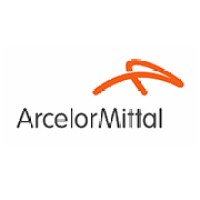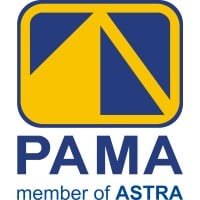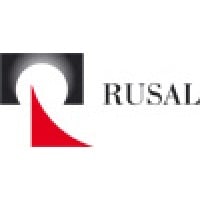Company Cyber Security Posture
NANA
NA Company Details
NA
NA
NA
NA
NA
NA
Scan still pending
NA
NA
Between 200 and 800
This score is AI-generated and less favored by cyber insurers, who prefer the TPRM score.
 NA Global Score
NA Global Score.png)

Company Scoring based on AI Models
| Model Name | Date | Description | Current Score Difference | Score |
|---|---|---|---|---|
| AVERAGE-Industry | 03-12-2025 | This score represents the average cybersecurity rating of companies already scanned within the same industry. It provides a benchmark to compare an individual company's security posture against its industry peers. | N/A | Between 200 and 800 |
Company Cyber Security News & History
| Entity | Type | Severity | Impact | Seen | Url ID | Details | View |
|---|
Company Subsidiaries

NA
Access Data Using Our API

Get company history
.png)
NA Cyber Security News
Central Asia’s geography inhibits a US critical minerals partnership
In the critical mineral sector, China holds the majority of mining permits in Kyrgyzstan and Tajikistan, Russia has monopolized regional uranium ...
Nova Resources lifts offer for Kaz Minerals to 780p a share
The consortium bidding to take London-listed copper miner Kaz Minerals private has increased its buyout offer to 780p a share as it seeks to ...
Nova Resources places $5.6bn final takeover offer to Kaz Minerals
Nova Resources (Bidco) has placed a final increased takeover offer to UK-based copper mining company Kaz Minerals of around £4.1bn in cash.
KAZ Minerals continues to struggle despite rebranding
KAZ Minerals shrank by 70% in size, but kept the higher grade, lower cost eastern region assets plus the Bozymchak gold mine in Kyrgyzstan, the ...
Kaz suitors switch £3bn buyout bid to straight takeover offer
The vehicle bidding for Kazakh copper producer Kaz Minerals has flipped its £3bn buyout proposal to a straight takeover offer amid ...
KAZ Minerals says risks around Baimskaya copper project in Russia up due to new government infrastructure plan
Kazakh copper miner KAZ Minerals on November 18 said risks around its Baimskaya copper project in Russia's Chukotka Region have risen due to ...

NA Similar Companies

ArcelorMittal
ArcelorMittal is the world's leading steel and mining company, with a presence in more than 60 countries and an industrial footprint in 18 countries. Guided by a philosophy to produce safe, sustainable steel, we are the leading supplier of quality steel in the major global steel markets including au

Votorantim Siderurgia
Criada em 2008, a Votorantim Siderurgia (VS) representa o segmento de aços longos dentro do portfólio da Votorantim S.A. A VS é uma organização de capital fechado, 100% nacional e a terceira maior produtora de aços longos no Brasil. Temos ainda o controle acionário da PazdelRío, única siderúrgica in

Gerdau
With a history spanning 122 years, Gerdau is Brazil's largest steel producer, one of the leading producers of long steel in the Americas and of special steel in the world. In Brazil, Gerdau also produces flat steel and iron ore for its own use. Gerdau also has a new business division, Gerdau Next, w

Glencore
Glencore is one of the world’s largest global diversified natural resource companies and a major producer and marketer of more than 60 commodities that advance everyday life. Through a network of assets, customers and suppliers that spans the globe, we produce, process, recycle, source, market and d

Pamapersada Nusantara
PT Pamapersada Nusantara (PAMA) is a wholly-owned subsidiary of PT United Tractors Tbk, a major distributor of Komatsu heavy equipment in Indonesia. PT Astra International Tbk, the major shareholder of PT United Tractors Tbk, is one of the largest and most respected companies in Indonesia. The embr

UC RUSAL
RUSAL is a leading global producer of low-carbon aluminium. More than 90% of the Company's aluminium is produced from renewable electricity, and by implementing innovative and energy-saving technologies RUSAL is able to reduce greenhouse gas emissions at all production stages. This has enabled RUSA

Frequently Asked Questions
Explore insights on cybersecurity incidents, risk posture, and Rankiteo's assessments.
NA CyberSecurity History Information
How many cyber incidents has NA faced?
Total Incidents: According to Rankiteo, NA has faced 0 incidents in the past.
What types of cybersecurity incidents have occurred at NA?
Incident Types: The types of cybersecurity incidents that have occurred include .
Additional Questions
What Do We Measure?
















Every week, Rankiteo analyzes billions of signals to give organizations a sharper, faster view of emerging risks. With deeper, more actionable intelligence at their fingertips, security teams can outpace threat actors, respond instantly to Zero-Day attacks, and dramatically shrink their risk exposure window.
These are some of the factors we use to calculate the overall score:
Identify exposed access points, detect misconfigured SSL certificates, and uncover vulnerabilities across the network infrastructure.
Gain visibility into the software components used within an organization to detect vulnerabilities, manage risk, and ensure supply chain security.
Monitor and manage all IT assets and their configurations to ensure accurate, real-time visibility across the company's technology environment.
Leverage real-time insights on active threats, malware campaigns, and emerging vulnerabilities to proactively defend against evolving cyberattacks.




